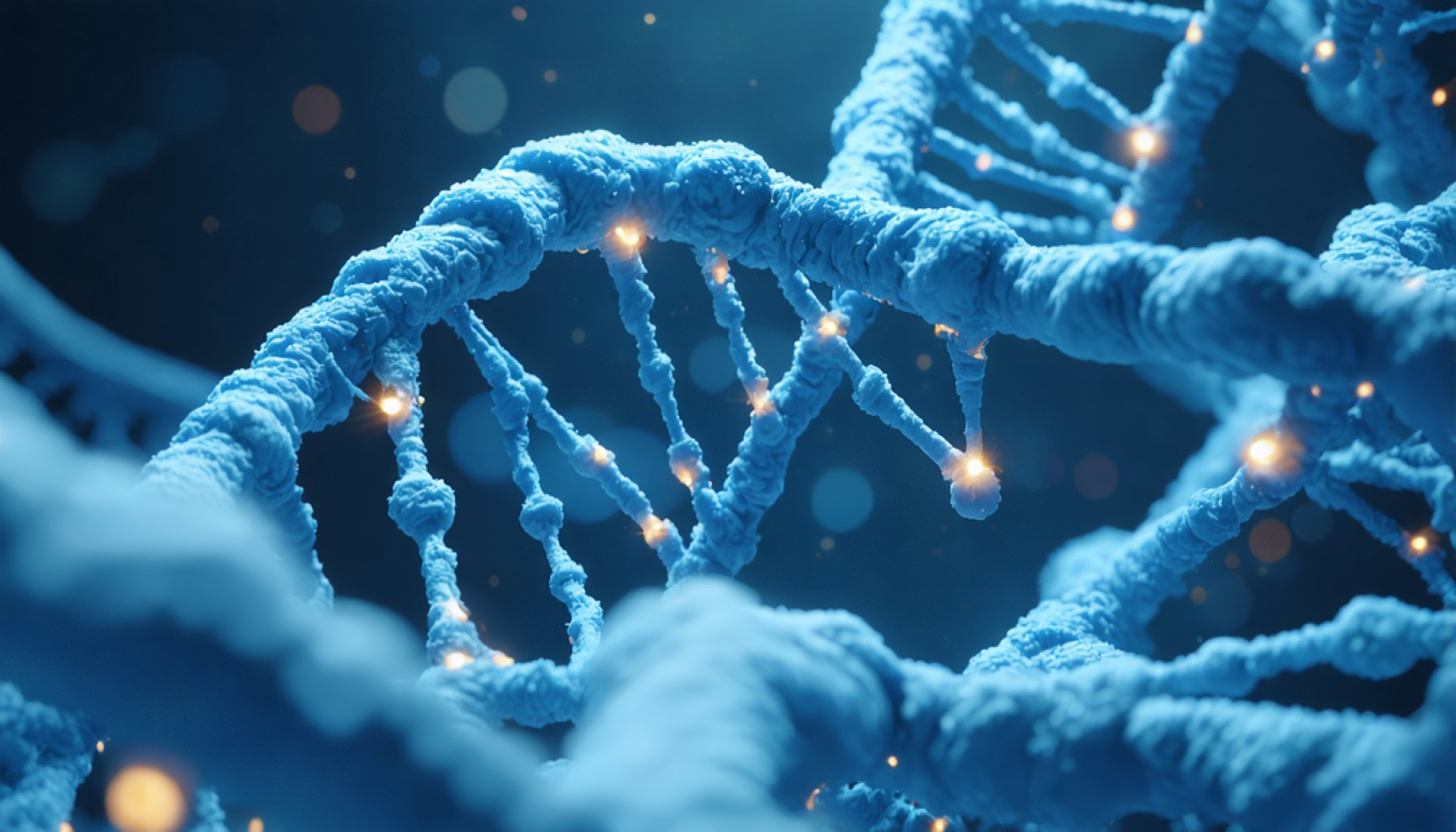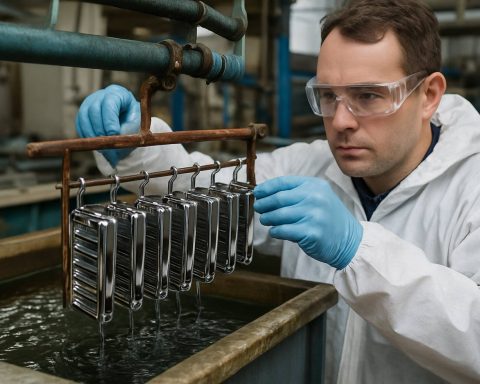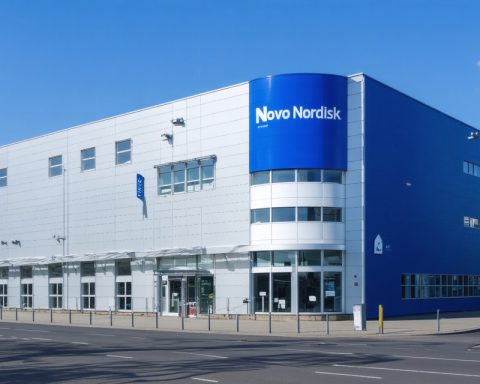- Beam Therapeutics has announced promising early clinical data for BEAM-302, a treatment for alpha-1 antitrypsin deficiency (AATD), showcased at the Alpha-1 Foundation 7th Global Research Conference.
- AATD is a genetic condition leading to early emphysema and liver complications, and BEAM-302 aims to correct genetic issues using base editing technology.
- Phase 1/2 trial results indicate a significant correction in protein levels, with a 79% reduction in mutant protein by Day 28.
- The treatment shows potential to elevate corrected protein (M-AAT) to 91% of total AAT, offering renewed hope for patients.
- Beam Therapeutics plans to further increase dose trials and explore treatment for patients with additional liver disease by late 2025.
- Despite scientific achievements, Beam’s stock price dropped, highlighting the unpredictable nature of the biotech sector.
The picturesque skyline of the pharmaceutical world was recently illuminated by a flicker of hope, heralded by Beam Therapeutics. As scientists and researchers convened at the illustrious Alpha-1 Foundation 7th Global Research Conference, anticipation turned to excitement with the latest news on BEAM-302, Beam Therapeutics’ flagship treatment for the elusive enemy that is alpha-1 antitrypsin deficiency (AATD).
AATD, a silent architect of despair, orchestrates an early play of emphysema and liver complications in those burdened with its inheritance. However, Beam Therapeutics stands undeterred, their resolve encapsulated in the innovative genetic wizardry of BEAM-302. Early clinical data glisten with promise, bolstered by the captivating evidence from the Phase 1/2 trial that cast the biotech giant in a new spotlight.
The trial, akin to a cautious-yet-ardent dance with genetics, redefines possibilities through base editing technology—a realm where gene sequences are subtly altered in vivo to correct the very fabric of life itself. The trial results tell a tale of hope: single doses of BEAM-302 offering a significant correction, reaching protein levels that march confidently above therapeutic thresholds. The cravings of the afflicted for a remedy were met with a remarkable drop of 79% in mutant protein levels by Day 28, whetting the appetite for further exploration.
The image of patients surpassing typical protein levels brings a poignant vision of normalcy, long since absent for those locked in genetic battle. This photographic moment of relief, where corrected protein (M-AAT) rose to form 91% of total AAT, captivates an audience yearning for renewal.
Yet, the beacon of innovation pierces further into the future. Beam Therapeutics is launching headlong into new territories, undaunted by past milestones. Preparations are underway to escalate the dosage intake, seeking to unravel further insights in the latter half of 2025. Meanwhile, plans unfurl silently, poised for treatment trials among AATD patients bearing the added burden of mild to moderate liver disease.
Unexpectedly, the company’s stock price stumbled in the financial arena amidst this flurry of scientific achievement. The stock’s value dipped, a nuanced reminder that paths in this industry are rarely smooth.
The triumphs of Beam Therapeutics resonate far beyond their immediate strides in treating AATD. They echo into the broader narrative of what’s achievable through genetic intervention, begging one to ponder: if we can edit the elements of life itself, what can’t we do? Beam Therapeutics urges us to see beyond today’s challenges, promising a future where genetic instructions are not a predetermined script but a manuscript open to revision.
Can Beam Therapeutics’ Gene Editing Revolutionize Treatment for Genetic Disorders?
Understanding Alpha-1 Antitrypsin Deficiency (AATD)
Alpha-1 antitrypsin deficiency (AATD) is an inherited disorder that can cause liver disease and lung complications, including emphysema. The condition stems from mutations in the SERPINA1 gene, which disrupt the production of the alpha-1 antitrypsin (AAT) protein crucial for protecting lung tissue.
How Beam Therapeutics is Leading the Charge
Base Editing Technology: Beam Therapeutics uses base editing, a cutting-edge form of gene editing that allows precise corrections to DNA sequences. Unlike traditional CRISPR technology, base editing can change a single DNA base without breaking the DNA strand, minimizing the risk of unwanted mutations.
BEAM-302 Progress: The Phase 1/2 trial of BEAM-302 demonstrates promising results. By Day 28, researchers noted a significant drop of 79% in mutant protein levels and an increase in normal protein, M-AAT, which comprised 91% of total AAT in patients. Such outcomes hint at a potential treatment that could alleviate the symptoms and halt disease progression.
Pressing Reader Questions
What are the potential side effects of BEAM-302?
While early trials have shown promise, the complete safety profile of BEAM-302 will require further exploration in trials. Typical concerns include off-target effects, immune reactions, and unintended genetic changes.
Why did Beam Therapeutics’ stock price fall?
Market fluctuations can be influenced by various factors, including broader economic conditions or investor sentiment on the timeline and profit potential of treatments still in the trial phase.
Real-World Use Cases and Impact
For Patients: Should BEAM-302 prove successful, it could provide a long-awaited cure for those living with AATD, improving quality of life and reducing the burden on healthcare systems.
For the Biotech Industry: Beam Therapeutics’ advancements in base editing technology could set a precedent, paving the way for treatments of other genetic disorders.
Controversies and Limitations
Ethical Concerns: Gene editing raises ethical questions around ‘designer babies’ and the long-term impact of altering human genetics.
Technical Challenges: Precision in editing is crucial, and potential off-target effects or unintended consequences remain a challenge for researchers.
Actionable Recommendations
1. Stay Informed: Follow reliable sources and directly from Beam Therapeutics to keep updated with the latest research and trial results.
2. Consult Healthcare Providers: Patients with AATD should discuss ongoing research with their healthcare providers to evaluate potential future treatment options.
3. Monitor Financials: Investors should keep an eye on clinical milestones and broader market trends that could impact the biotech sector.
Conclusion
Beam Therapeutics offers a hopeful vision for the future of genetic disorder treatments. As the biotech industry advances, it is crucial to balance scientific innovation with ethical responsibility. For those affected by genetic conditions, developments like BEAM-302 are a beacon of potential change, promising a future where genetic destiny might be rewritten for the better.










